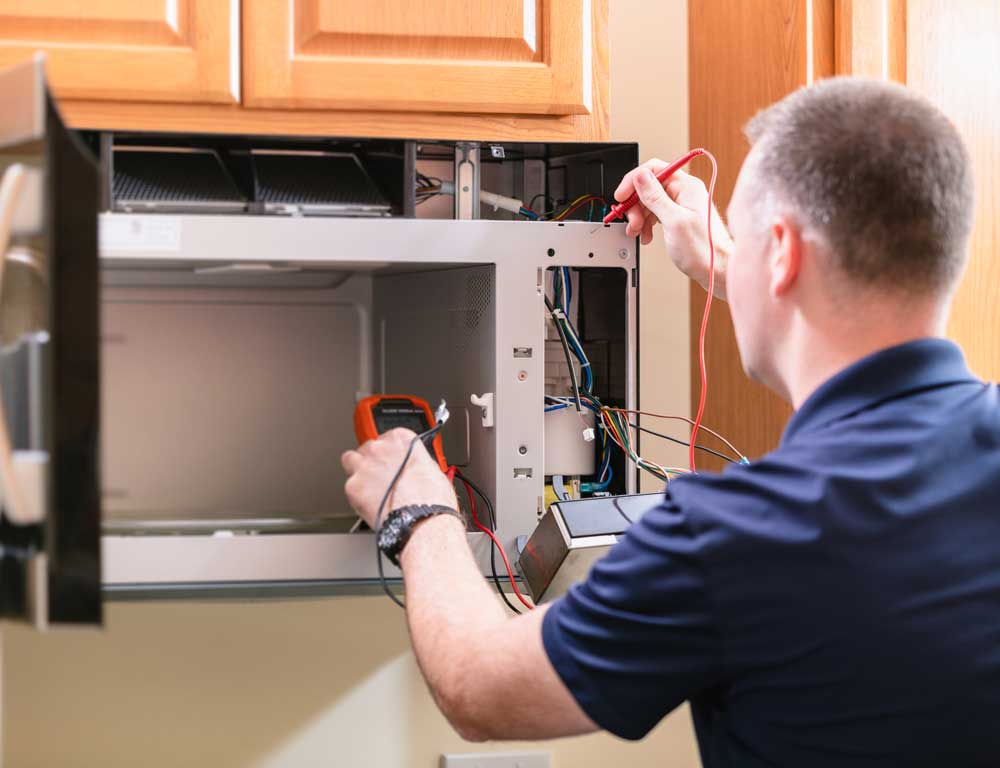Home Appliance Repair in Greensboro NC install, replace and perform maintenance on a variety of appliances like ovens, dishwashers, washers, dryers and refrigerators within residential or commercial properties. They often need to clear furniture and other obstacles in order to access electrical panels and plumbing systems.
It’s good for the environment and your wallet to fix appliances rather than buy new ones, as they help to minimize sourcing of raw materials and reduce energy used to source new products.
Refrigerators
Refrigerators are one of the most useful and important appliances in a home, but problems with them can be expensive to repair or even lead to food loss. If you find that your refrigerator is making unusual noises, leaking water, or producing odd smells, it may be time to call for repairs. However, before you do so, it’s a good idea to try some simple DIY fixes that are often cheaper than calling a professional.
Safety First
Always start any Appliance Repair in Greensboro NC by ensuring the refrigerator is unplugged and that you are working in a well-ventilated area. Taking these precautions will prevent electrical shock and other injuries during the repair process.
Refer to Documentation
If you kept any documentation during the disassembly process, consult it for guidance as you reassemble the refrigerator. This will help you ensure that all components are properly connected and placed in the correct locations.
Clean Components
Use a damp cloth and mild detergent to wipe down the interior and exterior of your refrigerator. This will remove dirt and grime that can hinder cooling efficiency and odor control.
Clean the Condenser Coils
Located either at the back or underneath of the refrigerator, the condenser coils should be cleaned several times a year to ensure proper air flow and cooling efficiency. Using a brush or vacuum cleaner, dust and other accumulations can be removed from the coils.
Thoroughly Test the Repairs
After reassembling the refrigerator, plug it in and reconnect all electrical connections. Verify that the thermostat is set correctly and that all door seals are tight and free from kinks. Monitor the refrigerator over several days to make sure the cooling system has been repaired and that there are no other lingering issues or adjustments required.
Washers
Washers are metal discs or plates that are sandwiched between two surfaces subject to rotative friction, such as the head of a screw or bolt and the surface into which it’s being driven. There are many types of washers, including plain, spring, and lock washers. The differences between them are in their design and materials. Steel is by far the most popular material, and there are various grades to choose from. Some washers are treated to increase their corrosion resistance.
Other types of washers are designed to dampen vibrations. These are known as vibration damping washers or vibration isolating washers. They are usually made from a soft, non-metallic material like rubber or plastic, and they can be effective at absorbing vibrations that might otherwise damage other objects. Some washers can even create a waterproof seal, such as liquid-sealing washers.
Some flat washers have a recessed center, which is useful for countersunk screws and nuts. This type of washer allows the nut or screw to be tightened without pushing the head of the fastener into the surface, which could cause it to strip. Other types of washers are designed to be aesthetically pleasing and provide insulation. These are called finishing washers, and they can be used in consumer applications such as cabinetry and furniture.
Using the right washer thickness is important for many applications, and using one that is too thick can increase the risk of loosening and damaging the surface into which it’s being driven. It’s also important to make sure the washer is the correct size for the fastener that you’re using it with. This can be easily checked by comparing the dimensions of the fastener to the nominal ANSI or USS sizes that most washers are sold in.
Dryers
Dryers heat and evaporate absorbed moisture from wet clothes, bedding and other textiles to remove them from the water cycle. They’re widely used in the food, pharmaceutical, agricultural, sugar, pulp and paper, wood, textiles and metal fabrication industries.
If your dryer isn’t heating, you may need a new heating element. Electrical heating elements are particularly sensitive to being damaged or having foreign objects in contact with them, so it’s important to keep any items away from them when your dryer is operating. A faulty high-limit thermostat or thermal fuse can also cause insufficient heating by tripping before temperatures reach unsafe levels.
Unless you’re familiar with dryer parts, this type of problem should be left to professionals for repair or replacement. A professional can also help you determine whether a dryer vent that’s blocked by lint is the source of the problem. According to Underwriters Laboratories (UL), lint removal is an essential step in maintaining the safety and efficiency of your dryer. You should clean the lint filter and external venting on your dryer at least once every two years.
